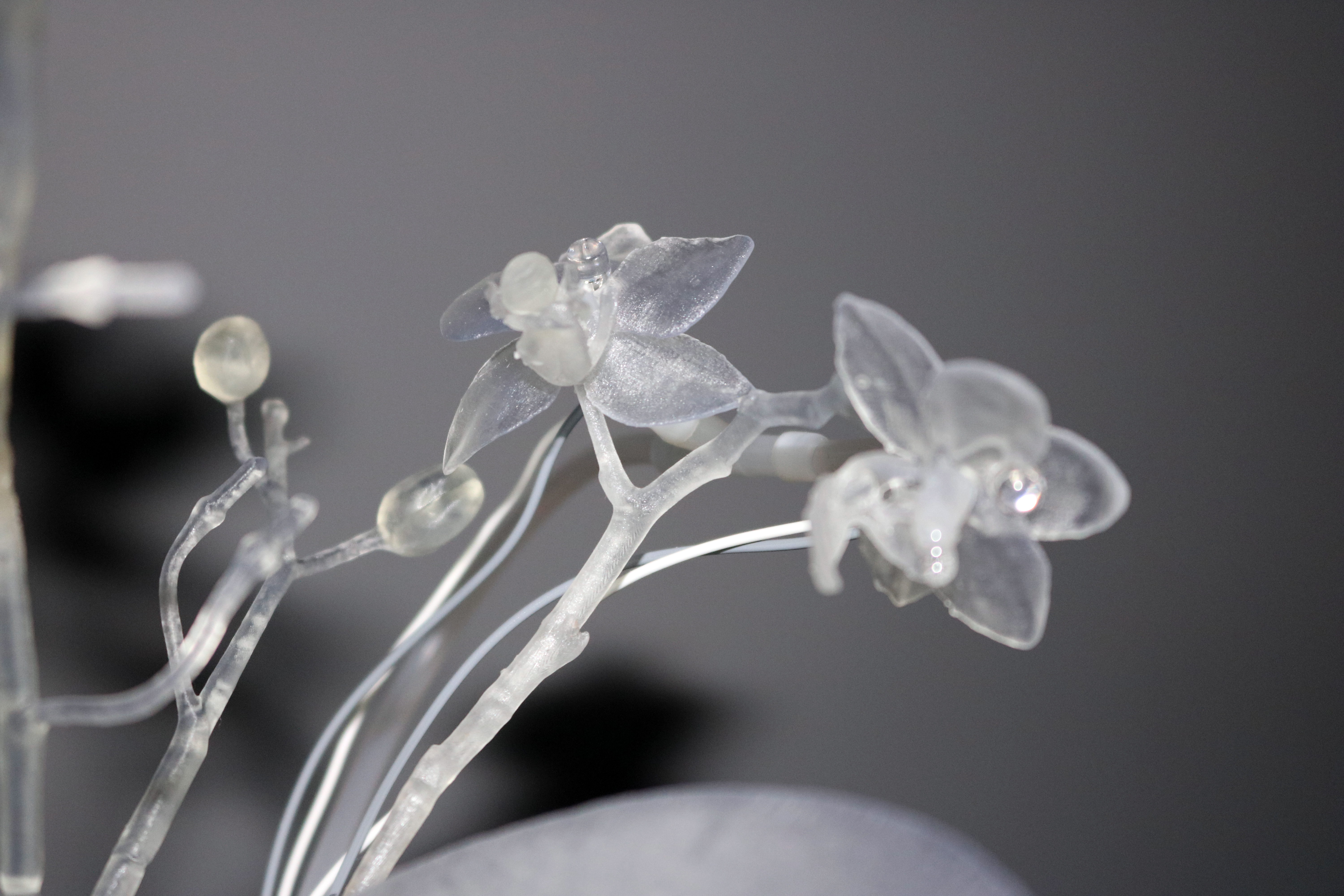
False Nectar Flower
2017-2018
3D Resin Printed Orchid and Bee, Plexi Glass, Arduino, Stepper Motor, LED Silicon Tubing
The artwork "False Nectar Flower" combines 3D printing technology, electronics, and a Pavlovian concept to explore the intricate relationship between bees and flowers. This intriguing piece consists of a 3D resin-printed orchid and a simulated feeding mechanism for honey bees.
The 3D-printed orchid serves as the centerpiece of the installation, capturing the intricate beauty of a real flower. Integrated within the artwork are various electronic components, including an Arduino board, a stepper motor, and an LED. A silicone tubing, presented at the lips of the flower, contains a sensor that measures the volume of liquid (sugar water) present.
The feeding mechanism is designed to mimic a Pavlovian response, conditioning the bees to associate the presence of liquid with a specific cue. When a bee feeds from the flower, the sensor inside the silicone tubing detects the liquid volume and completes an organic circuit through two conductive sensors. This completion of the circuit signals the pump to shut off.
The pump remains inactive until the water level decreases due to the presence of a feeding bee. When this happens, the pump is reactivated, and simultaneously, a blue LED atop the feeding tube is illuminated. The light acts as a conditioning device, visually indicating the presence of liquid to the bees.
"False Nectar Flower" aims to explore the complex interplay between nature and technology, using a combination of mechanical and sensory elements to create an interactive experience for both the viewer and the bees. The artwork challenges our understanding of communication and conditioning in the natural world and prompts contemplation on the delicate balance between manipulation and harmony in our relationship with nature.

